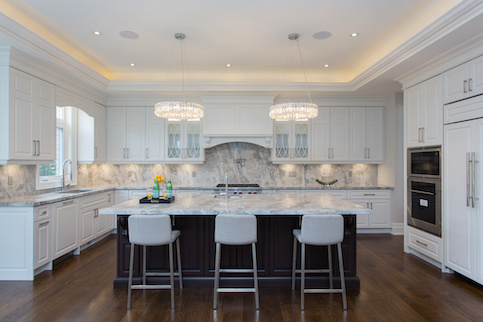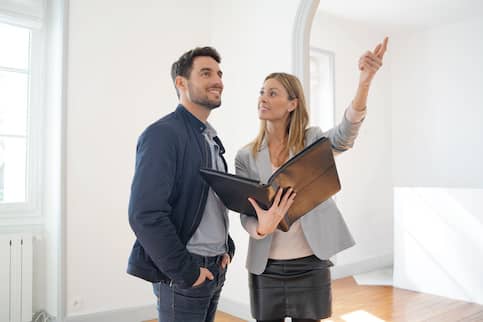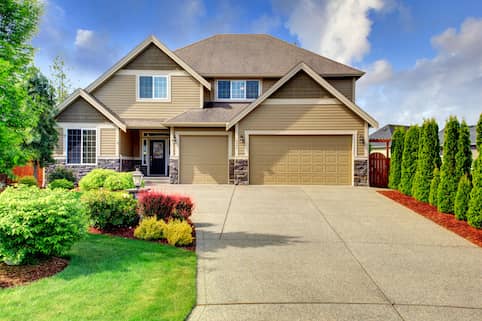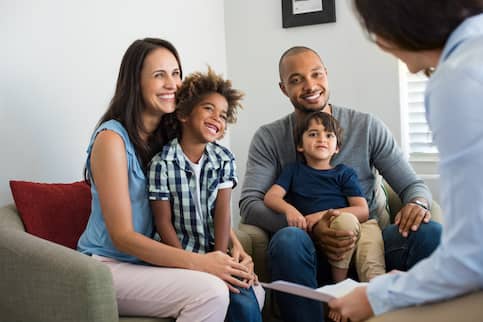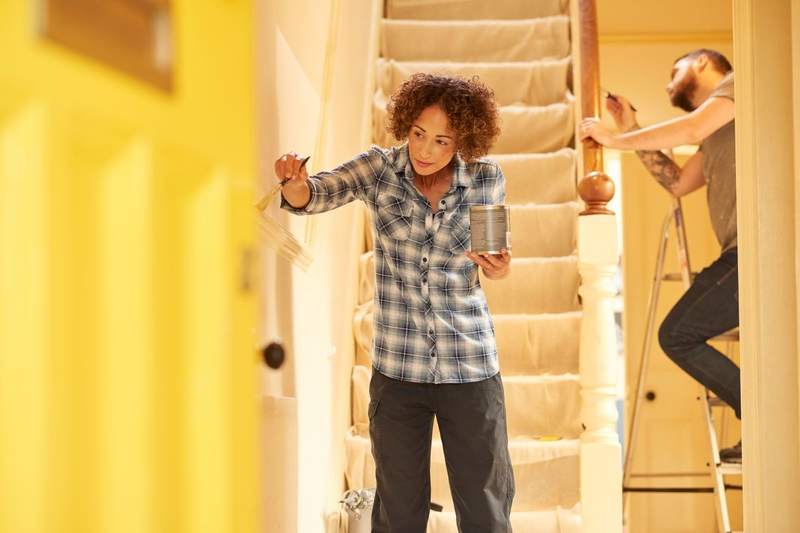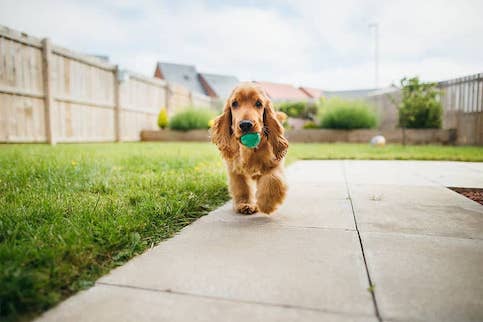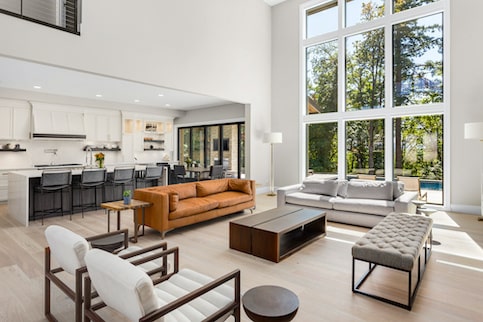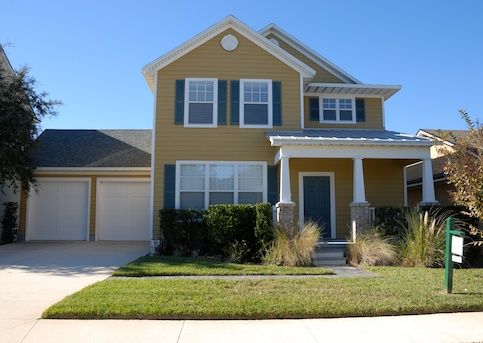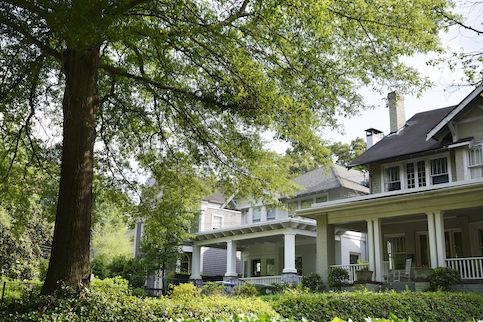Home staging is a tool home sellers can use to attract buyers, sell more quickly and boost the sale price. Good staging makes your house stand out from other listings and prioritizes your property for home buyers.
Key Takeaways:
- Home staging is preparing a home for market by making it more attractive to potential buyers.
- Good home staging can help you find a buyer faster and sell a home for a higher price.
- Staging requires you to spend more to list your home, but the benefits can outweigh the costs – especially in a buyer’s market.
What Is Home Staging?
Home staging is a way of improving the appeal of your home to buyers by presenting it in its best light. This may involve deep cleaning, decluttering, rearranging furniture, repainting, replacing flooring or adding certain aesthetic pieces to make the house more appealing. Home staging can accelerate the selling process because it creates a great first impression of the house you’re trying to sell.
What’s Your Goal
Buy A Home
Discover mortgage options that fit your unique financial needs.

Refinance
Refinance your mortgage to have more money for what matters.
Tap Into Equity
Use your home’s equity and unlock cash to achieve your goals.
Benefits Of Home Staging To Sell
Home staging makes it much easier for buyers to visualize the property as their own, according to 81% of buyers’ real estate agents. At the same time, 27% of seller’s agents said home staging slightly decreases the time on the market, which can be helpful for houses that aren’t selling.
5 Benefits Of Home Staging
Let’s take a look at some of the advantages of home staging:
1. Creates A Move-In-Ready Look
Buyers look for homes they can move into without many renovations or cleaning required. The easier it is for them to move in and start living, the faster homes sell.
2. Potential Buyers Can See Themselves In The Home
Decluttering and home staging allow buyers to view their belongings and family in the house, making it easy to appeal to their emotions and sell the house.
3. Your Home May Sell Faster
Staged homes often sell faster and for more money because it reduces the amount of cosmetic work and instills confidence there aren’t deeper problems.
4. Your Home May Sell For More Money
The more emotionally tied buyers get to a home, the more likely they are to sign a sales contract and meet your asking price to ensure they get the deal.
5. Creates A Better First Impression
Buyers can easily view as many homes as they want online, so the first impression is key. Staging a home to sell helps catch potential buyers’ attention when browsing online, making them more likely to make an offer.
Ready To Become A Homeowner?
Get matched with a lender that can help you find the right mortgage.
How Much Does Home Staging Cost?
According to the National Association of Realtors, the median cost of a professional home stager is $600. It can cost more, depending on local markets. High-cost areas may need premium staging touches. The number and type of rooms to be staged can also increase staging costs. This year, HomeAdvisor reported based on staging projects done by its members the range of cost generally fell between $837 and $2,924.
If staging a house on a budget is on your agenda, consider trying to do some or all of it yourself. You can also enlist the help of your real estate agent. The NAR study found that staging can be cheaper if the seller’s agent stages the home – a median cost of $400. Some agents include paying for a professional home stager in their clients’ marketing benefits.
Take The First Step To Buying A Home
Find a lender that will work with your unique financial situation.
Is Home Staging Worth It?
There are many factors to consider when weighing the cost of home staging. The NAR study found that 20% of sellers’ agents reported an increase of 1% to 5% of the dollar value offered by buyers.
“Home staging is a game-changer in real estate,” says Yoann Dorat, global real estate advisor with ONE Sotheby’s International Realty in Boca Raton, Florida. “I’ve seen cases where two units in the same Miami building were up for sale. Surprisingly, the lower-floor unit, though less impressive in view and value, sold faster and at a higher price than the upper-floor unit. The difference? Staging.”
Whether it’s worth it also depends on whether you’re selling in a buyer’s or seller’s market. In a buyer’s market — where supply exceeds demand — there are plenty of homes available and fewer buyers. This can make it harder to sell a home and be where staging really makes a difference. On the other hand, if it’s a seller’s market — where demand exceeds the supply of homes — staging may not be as necessary.
Key Elements of Home Staging
Let’s go over some of the most important focus areas when it comes to staging a home.
Deep Cleaning
Deep cleaning is much more thorough than a surface clean. You aren’t just dusting and mopping. Instead, you’re getting in all the nooks and crannies to make the house shine. This includes closets, drawers, crawl spaces and even cleaning stove drip pans and smoke alarms.
Depersonalization
It can be hard for prospective buyers to do that if the home is still full of all your personal items. Removing the aspects of your home that relate to your taste and style can allow the buyer to see the home as a blank slate.
Furniture Arrangement
You can open up the space by removing or rearranging furniture and clutter. Go for a minimal look so that buyers can easily move around the home.
Color Neutralization
A big tip for staging a home is to keep the colors neutral. Staging experts often advise sellers to use the 60-30-10 color rule to apply accent colors. This means that 60% of the room is the main color — typically white or beige. Then, 30% of the home is another neutral color that compliments the main color, and 10% is an exciting accent color to infuse some energy — like a pastel or earthy tone.
Home Staging Options
There are several different options for sellers who choose to stage their homes. You can do it yourself, hire a professional or use your real estate agent.
Do It Yourself
If you have an eye for detail and know what home buyers want, you can handle the home staging yourself. Keep in mind this may include tasks such as repainting, rearranging furniture, removing personal items and adding neutral pictures and other decor to appeal to a wide audience.
Professional Home Stager
A professional home stager knows what buyers want and how to appeal to their senses. They take the least time to stage your home but, when they are done, you may have to live in a home that may not feel like yours. In the NAR survey, 24% of sellers’ agents used a professional home stager and 24% said it depends on the situation.
Real Estate Agent
An experienced real estate agent or Realtor can also help you stage your home. Since they know what local home buyers want, your real estate agent can help you highlight specific areas or make small changes to catch the eye of more buyers. In the NAR survey, 22% of seller’s agents said they personally offered to stage the home.
9 Tips For Staging A Home For Sale
Before listing your house for sale, consider these tips on how to maximize the benefits of staging a home.
1. Declutter And Depersonalize Your Belongings
Home buyers want to be able to walk in and envision their new life in your home. Remove any personal items that aren’t immediately necessary for everyday living, which may include trinkets and photographs. Experts recommend using the one-quarter to one-half rule, which means at least one-quarter to one-half of your furniture, books, personal items, and accessories get put into storage before you start showing the home.
2. Make Repairs
When staging your home, you may uncover issues. While most buyers want a “perfect” home, there are things you should and shouldn’t fix. However, the right repairs may boost the value of your home, making you greater profits. These include:
- Walls and ceilings: Walls and ceilings see wear and tear through daily living. Pictures, kids, and moving furniture easily scratch, dent and put holes in the walls. Some quick patchwork can make your house look like new.
- Water systems: Leaky pipes, dripping faucets or noisy toilets can easily distract homebuyers.
- Flooring: Flooring is as important as the walls. If there are cracks, stains or chips in the flooring, repair them or consider replacing the entire flooring if the damage is bad enough.
3. Boost Curb Appeal
Curb appeal refers to the first impression your home makes when the driver first pulls up into the driveway. According to NAR, 92% of Realtors suggest that sellers improve curb appeal before listing a home. You’ll want to make sure your lawn is cut, garden is watered, and that cosmetic issues with paint are addressed.
4. Give The Kitchen An Upgrade
For buyers, the kitchen can be one the most important rooms in the house. An entire kitchen remodel can get very expensive, but there are smaller upgrades like repainting cabinets that can be worth the time and expense if you have an older kitchen.
5. Show Off Storage Space
Buyers want to know that the home has enough storage space to fit all their belongings. Try to clear out your cabinets, closets, and shelves as much as you can.
6. Fill Your House With Pleasant Aromas
You can use an oil diffuser or fresh flowers to spread a fresh, pleasant fragrance throughout the home. Just be sure to avoid any fragrances that might be to strong or overwhelming.
7. Make Your Bathrooms Shine
When you deep clean the home, it’s especially important to thoroughly scrub the bathrooms. Make sure the tub, shower, and toilet are immaculately clean of any grime — including hard water, soap scum and mildew.
8. Use Beautiful Lighting
Pull back the curtains, raise the blinds, and add lighting fixtures as needed. You may also want to replace the light bulbs with higher wattage bulbs. It’s typically recommended that you have at least 100 watts for every 50 square feet.
9. Finish Unfinished Projects
Complete any unfinished home projects before you start showing the home. It can ruin the vibe of the tour if a buyer walks into a room and the carpet has been ripped up but not replaced — or the walls are only partially painted.
FAQ
Here are some commonly asked questions about home staging.
The Bottom Line
Home staging is a great way to highlight your home’s features. You can hire a professional to do the home staging, manage it yourself or combine the two for the best results. When you invest in decluttering, cleaning or completely updating your home, you’ll increase your chances of selling the home faster and at the price you want.
Sam Hawrylack contributed to the reporting of this article.

Rory Arnold
Rory Arnold is a Los Angeles-based writer who has contributed to a variety of publications, including Quicken Loans, LowerMyBills, Ranker, Earth.com and JerseyDigs. He has also been quoted in The Atlantic. Rory received his Bachelor of Science in Media, Culture and Communication from New York University. He also completed the SoFi/Coursera Fundamentals of Personal Finance Specialization consisting of five courses: Introduction to Personal Finance, Saving Money for the Future, Managing Debt, Fundamentals of Investing, and Risk Management in Personal Finance.
